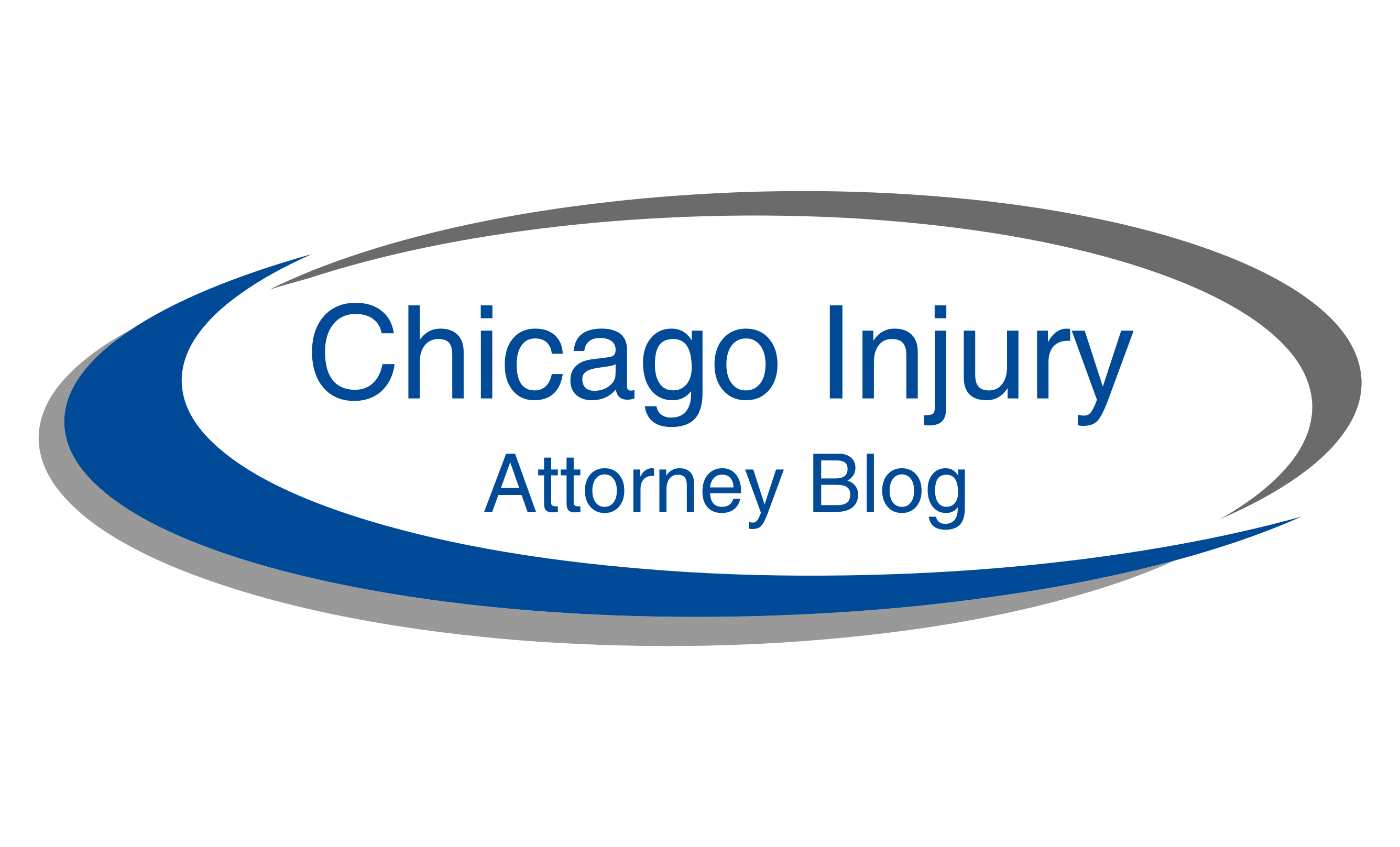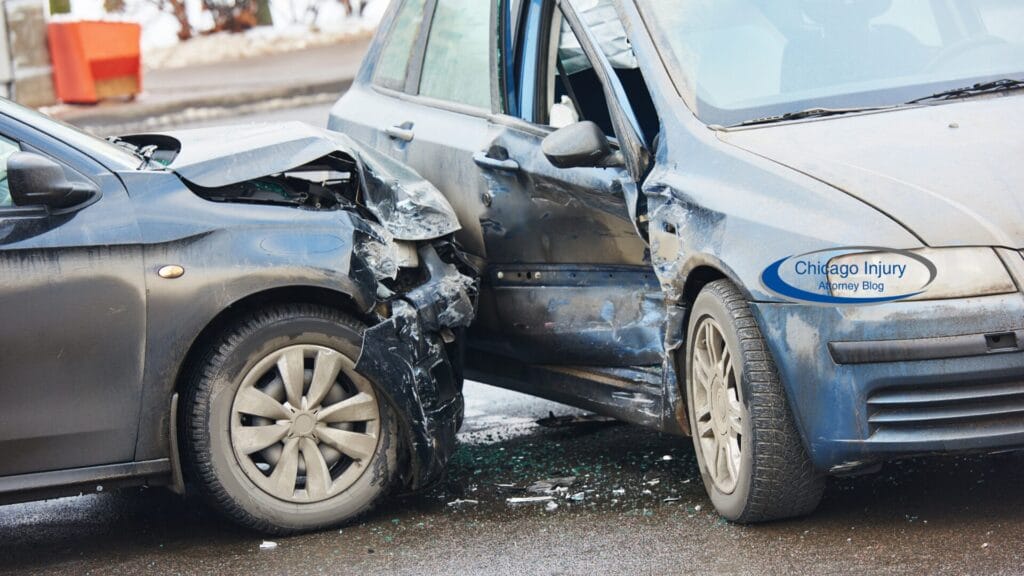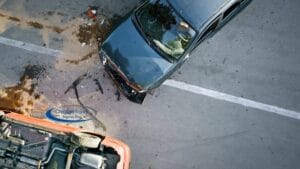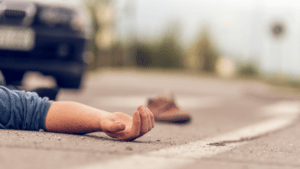Car crashes often result in significant physical and emotional repercussions.
In Illinois, specific types of collisions occur with greater frequency than others, each associated with distinct causes and potential injuries.
Car crashes, including rear-end collisions, T-bone accidents, and head-on collisions, require a comprehensive understanding to help victims navigate the aftermath effectively.
This article provides a detailed analysis of the five most prevalent types of car crashes in the state, outlining their causes and the common injuries associated with each. This information aims to ensure that individuals are informed and prepared should they encounter such situations.
The Most Common Types of Car Crashes in Illinois
Car accidents are regrettably common on the roads of Illinois, encompassing a variety of types, including rear-end collisions, head-on collisions, T-bone accidents, and more. Each category of vehicle collision can have a profound impact on the lives of victims, resulting in injuries, emotional distress, and financial burdens.
Familiarizing oneself with the most prevalent types of car crashes can assist victims in navigating their legal options and ensuring they receive the compensation they are entitled to. This article will examine these common car accidents in detail, focusing on their causes, effects, and the significance of consulting personal injury attorneys for effective recovery following an accident.
1. Rear-end Collisions
Rear-end collisions represent one of the most prevalent categories of automobile accidents in Illinois, frequently resulting from factors such as distracted driving, sudden stops, or tailgating. These incidents commonly occur at intersections or during periods of heavy traffic, often resulting in significant vehicle damage and injuries to those involved.
It is essential for victims to comprehend the causes and consequences of rear-end collisions, as this understanding is vital for effectively filing insurance claims and holding the responsible parties accountable for their negligence.
What Causes Rear-end Collisions?
Rear-end collisions can result from a multitude of factors, including distracted driving, drowsy driving, and violations of traffic regulations, particularly in high-volume traffic areas. These incidents frequently occur when a driver fails to maintain an appropriate following distance or is otherwise inattentive to the road ahead.
According to the National Highway Traffic Safety Administration (NHTSA), distracted driving was responsible for approximately 391,000 injuries in 2015 alone, underscoring the urgent need for heightened awareness regarding this issue. Drowsy driving is also a significant factor; the Centers for Disease Control and Prevention (CDC) estimates that about one in 25 adult drivers reported having fallen asleep at the wheel within the past month.
Moreover, insufficient adherence to traffic laws, such as speeding or neglecting to observe brake lights, exacerbates these risks. It is crucial for all road users to prioritize safety and maintain vigilance.
What Are the Common Injuries from Rear-end Collisions?
Victims of rear-end collisions frequently sustain a variety of injuries, including whiplash, back pain, and other car accident-related conditions that can result in substantial medical expenses and emotional distress. The ramifications of these injuries often significantly impair a victim’s quality of life and capacity for work.
Whiplash, in particular, is one of the most common injuries associated with such incidents, characterized by neck pain and stiffness stemming from the sudden jerking motion during the collision. A victim may also experience chronic headaches and fatigue as a consequence of the trauma endured. Along with the physical effects, many individuals contend with anxiety and depression following the incident, as they grapple with fears of future accidents or the limitations imposed by their injuries.
These emotional challenges can exacerbate the already considerable medical costs associated with treatment, rehabilitation, and, in certain cases, the long-term management of symptoms. Consequently, the recovery process can become a daunting endeavor, both financially and psychologically.
2. T-bone Collisions
T-bone collisions, commonly referred to as side-impact accidents, generally occur at intersections when one vehicle impacts the side of another. These incidents can yield severe consequences for both passengers and drivers.
Such accidents are often particularly catastrophic and frequently arise from negligent driving, non-compliance with traffic signals, or misjudgment during periods of high traffic volume. A comprehensive understanding of the dynamics surrounding T-bone accidents is crucial for victims pursuing recovery and seeking financial compensation.
What Causes T-bone Collisions?
T-bone collisions frequently occur due to various factors, including traffic signal violations, driving under the influence, and a lack of attention to oncoming traffic. These elements significantly increase the risk of side-impact accidents, which can result in severe injuries for all individuals involved.
Driving under the influence remains a predominant cause of T-bone accidents, with studies indicating that approximately 29% of all traffic fatalities involve intoxicated drivers. Additionally, neglecting traffic signals or failing to yield can further elevate the likelihood of such hazardous encounters.
The legal consequences of these violations can be substantial, with drivers facing severe penalties, including substantial fines and potential imprisonment, in addition to liability for damages inflicted upon others. Specifically, those found at fault for traffic signal violations may be held accountable for the medical expenses and lost wages of their victims.
Understanding these implications is essential in fostering safer driving habits, ultimately contributing to a reduction in the occurrence of these tragic incidents.
What Are the Common Injuries from T-bone Collisions?
Injuries resulting from T-bone collisions can vary significantly, encompassing fractures, internal injuries, and psychological effects such as emotional distress. These injuries often necessitate substantial medical expenses and treatment. The severity of such injuries typically requires extensive recovery time, which may adversely affect the victims’ quality of life.
Individuals involved in these accidents may also experience complications such as whiplash, concussions, or even spinal cord injuries. These conditions not only impair physical mobility but can also result in long-term psychological trauma. Consequently, victims may be compelled to miss work, which leads to a loss of income alongside escalating medical bills for treatments, including physical therapy and psychological counseling.
Navigating the complexities of insurance claims following an accident can be daunting, underscoring the importance of seeking legal assistance. Attorneys specializing in personal injury law can provide invaluable support, helping individuals understand their rights and secure appropriate compensation, thereby alleviating the financial burden during the recovery process.
3. Head-on Collisions
Head-on collisions represent one of the most perilous categories of vehicle accidents, frequently leading to severe injuries or fatalities due to the direct impact of two vehicles approaching one another.
Such incidents often arise from factors such as distracted driving, negligent behavior, or driving against traffic, underscoring the critical need for road safety and heightened awareness among all drivers.
What Causes Head-on Collisions?
The primary causes of head-on collisions include driving under the influence, distracted driving, and unsafe lane changes, all of which can result in catastrophic outcomes for all parties involved. Understanding these factors is essential for promoting road safety and emphasizing the importance of adhering to traffic laws.
Driving under the influence significantly impairs an individual’s judgment and reaction times, increasing the likelihood of veering into oncoming traffic. Likewise, distracted driving—whether caused by texting or adjusting the radio—divides a driver’s attention, thereby heightening the chances of a collision. The ramifications for victims can be severe, often resulting in substantial injuries, emotional trauma, and even fatalities.
In such instances, determining liability for the accident is crucial, as it not only affects the compensation available to victims but also acts as a deterrent against reckless driving behavior. Raising awareness about these issues has the potential to save lives and reduce the frequency of these devastating incidents.
What Are the Common Injuries from Head-on Collisions?
Victims of head-on collisions may endure severe injuries, such as traumatic brain injuries, spinal cord damage, and multiple fractures, resulting in substantial medical expenses and challenging recovery processes. The significant physical and financial repercussions of these injuries can be overwhelming for both victims and their families.
Along with the prospect of long-term rehabilitation, ongoing therapy, and potential loss of income, the emotional burden can be equally profound. Treatment often necessitates extensive medical interventions, frequent hospital visits, and specialized care, which can place considerable strain on the victim’s financial situation. Furthermore, navigating the complexities of insurance claims can complicate recovery efforts.
Given these challenges, consulting a personal injury lawyer is essential. Their expertise can assist victims in securing the compensation necessary to cover medical expenses, lost wages, and pain and suffering, allowing them to concentrate on their healing and the process of rebuilding their lives.
4. Side-swipe Collisions
Side-swipe collisions occur when two vehicles make contact while traveling in the same or opposite directions, often resulting from driving negligence or a failure to maintain lane discipline. Such accidents can lead to significant vehicle damage and personal injuries.
Therefore, it is crucial for victims to understand their rights and the legal options available for pursuing compensation.
What Causes Side-swipe Collisions?
The causes of side-swipe collisions frequently include distracted driving, drowsy driving, and violations of traffic laws, particularly improper lane changes. Understanding these factors is essential for minimizing risks and ensuring road safety for all motorists.
Distracted driving is a significant contributor to these incidents, often resulting from the use of mobile devices, which leads to impaired focus on the road. Similarly, drowsy driving typically arises from insufficient sleep, making it challenging for drivers to maintain awareness of their surroundings.
Traffic violations, especially those involving lane changes without signaling or neglecting to check blind spots, further increase the risk of collisions. To mitigate these dangers, it is critical to implement preventive measures such as strict enforcement of traffic laws and the promotion of public awareness campaigns aimed at enhancing overall traffic safety.
Encouraging drivers to prioritize safety over convenience can significantly reduce the incidence of side-swipe collisions and contribute to a more secure driving environment.
What Are the Common Injuries from Side-swipe Collisions?
Injuries resulting from side-swipe collisions can vary significantly, ranging from minor bruises to more severe conditions such as whiplash and concussions. These injuries often result in substantial medical expenses and extended recovery periods. It is essential for victims to understand the potential injuries they may face in order to effectively pursue their legal rights and file claims with insurance companies.
Victims may frequently experience debilitating back injuries, broken ribs, or even psychological trauma, all of which can have a profound impact on their daily lives. The process of navigating the complexities of claims and compensation can be overwhelming, particularly in light of accumulating medical bills and rehabilitation costs. This is where personal injury lawyers become invaluable, providing guidance to victims as they maneuver through the intricacies of the legal system and advocating for equitable compensation.
The expertise of personal injury attorneys plays a critical role in ensuring that individuals affected by such accidents receive the necessary support to recover and rebuild their lives. Therefore, it is advisable to consult with a qualified attorney at the earliest opportunity.
5. Single Vehicle Accidents
Single vehicle accidents transpire when a vehicle collides with a fixed object, such as a tree or guardrail. These incidents are frequently associated with factors such as distracted driving or adverse weather conditions.
It is essential for victims to comprehend the causes and implications of single vehicle accidents in order to understand their rights and effectively navigate the legal landscape.
What Causes Single Vehicle Accidents?
The causes of single vehicle accidents frequently include driver negligence, which may manifest as drowsy driving, mechanical failures, or adverse weather conditions that impair vehicle control. Recognizing these factors is essential for implementing safety measures aimed at reducing the risk of such accidents.
Additional factors contributing significantly to these incidents include distracted driving, underestimating road conditions, and neglecting vehicle maintenance. It is crucial for drivers to acknowledge that distractions—whether from mobile devices or conversations—can result in momentary lapses in attention with potentially serious consequences.
Environmental conditions, including rain, fog, or ice, can profoundly affect vehicle handling dynamics. To mitigate the risk of accidents, the following safety measures are recommended:
- Avoid multitasking while driving
- Ensure regular maintenance of the vehicle
- Adjust speed in accordance with road conditions
Enhancing awareness of the significance of vigilance can foster safer driving practices.
What Are the Common Injuries from Single Vehicle Accidents?
Victims of single-vehicle accidents may sustain a range of injuries, including traumatic brain injuries and spinal injuries, as well as emotional distress. These injuries can result in substantial medical expenses and present challenges during the recovery process. It is essential for victims to understand the nature of these injuries as they navigate their claims and pursue compensation.
Along with the visible physical injuries that may necessitate extensive medical treatment and rehabilitation, individuals frequently encounter psychological challenges such as anxiety, depression, and post-traumatic stress. These emotional impacts can further complicate the healing process, adversely affecting daily routines and interpersonal relationships.
Legal support is critical in this context. By assisting victims in gathering the necessary documentation, legal professionals can facilitate claims for mounting medical bills and emotional suffering. This support not only alleviates some of the financial burdens but also enables victims as they strive to rebuild their lives following such traumatic experiences.
What to Do If You Are Involved in a Car Crash in Illinois?
If there is a car accident in Illinois, it is imperative to take immediate actions to safeguard your health and legal rights. This includes seeking medical attention, contacting the police to file a report, and collecting evidence at the scene to support your case.
Furthermore, consulting with experienced personal injury attorneys can offer vital legal assistance and guidance in navigating insurance claims and the recovery process following the accident.
1. Seek Medical Attention Immediately
Seeking immediate medical attention following a car crash is essential, even if injuries appear to be minor, as some injuries may not present symptoms right away. A prompt medical evaluation also provides critical documentation necessary for any future legal claims related to emotional distress and physical recovery.
This is particularly significant because certain injuries, such as concussions or soft tissue damage, may not exhibit symptoms until days or weeks later. By obtaining a professional assessment promptly, individuals not only protect their health but also create a medical record that can substantiate their case if compensation is sought.
Early intervention in these circumstances can lead to more effective treatment plans, potentially mitigating chronic pain and long-term complications. Therefore, taking proactive steps after a collision not only facilitates immediate recovery but also strengthens one’s position in successfully settling claims.
2. Call the Police and File a Report
Following a car accident, it is imperative to contact the police to file an official report. This report creates a documented account of the incident, which is essential for establishing liability. The police report can significantly influence any subsequent insurance claims and legal proceedings.
By documenting the details surrounding the incident—such as the time, location, and environmental conditions—the report provides an objective perspective that clarifies the circumstances. It often includes witness statements and diagrams, which further solidify the case for those involved.
This documentation is invaluable, as it serves as a foundation for negotiations with insurance companies and helps address any disputes that may arise between the parties.
In summary, timely and comprehensive reporting is not merely a formality; it is a critical step toward ensuring equitable treatment and safeguarding one’s rights.
3. Collect Evidence and Information
Collecting evidence and information at the scene of a car crash is essential for supporting one’s case. This includes taking photographs of the vehicles involved, obtaining witness statements, and documenting the conditions surrounding the incident. Such information can prove invaluable when filing insurance claims and pursuing legal action.
Along with these steps, it is important to gather as much relevant documentation as possible. This should encompass noting the time and location of the incident, weather conditions, and any traffic signals or signs that may have influenced the event.
If injuries are sustained, seeking medical attention promptly and preserving medical records can play a critical role in validating claims. It is advisable to exchange contact and insurance details with the other party involved, as well as secure contact information from bystanders who are willing to provide their accounts.
Utilizing a smartphone to record critical information can streamline this process and ensure that no details are overlooked.
4. Contact an Experienced Car Accident Attorney
Engaging the services of an experienced car accident attorney is an essential step following a vehicular collision. These legal professionals provide the specialized assistance needed to navigate the complexities of claim compensation and ensure that your rights are upheld. Personal injury lawyers possess valuable insights and strategies for effectively pursuing your case.
Having a knowledgeable advocate can enable victims to confront the often daunting legal landscape that arises after an accident. These attorneys are proficient in negotiating with insurance companies, a task that can be particularly challenging for individuals who may not fully understand their rights and entitlements.
They excel in gathering evidence and compiling the necessary documentation to support every aspect of the claim, ensuring that no detail is overlooked. With their expertise, individuals can significantly enhance their chances of obtaining fair compensation for medical expenses, lost wages, and other costs resulting from the incident.
Frequently Asked Questions
What are the 5 most common types of car crashes?
The 5 most common types of car crashes are rear-end collisions, side-impact collisions, head-on collisions, single-vehicle crashes, and multiple-vehicle crashes.
What should I do if I am involved in a rear-end collision?
If you are involved in a rear-end collision, the first thing you should do is check for any injuries and call for medical assistance if needed. Then, exchange insurance information with the other driver and document the scene by taking pictures and getting witness statements.
What are the most common injuries in side-impact collisions?
The most common injuries in side-impact collisions are whiplash, broken bones, lacerations, and bruises. These injuries can range from minor to severe and may require medical treatment.
How can head-on collisions be prevented?
Head-on collisions can be prevented by following traffic laws and signals, maintaining a safe distance from other vehicles, and avoiding distractions while driving. If you encounter a driver who is swerving or driving recklessly, try to stay away from them or report them to the authorities.
What should I do if I am involved in a single-vehicle crash?
If you are involved in a single-vehicle crash, the first thing you should do is check for injuries and call for medical assistance if needed. Then, document the scene by taking pictures and getting witness statements. It is important to also report the crash to your insurance company.
What steps should I take after being in a multiple-vehicle crash?
After being in a multiple-vehicle crash, you should first check for any injuries and call for medical assistance if needed. Then, exchange insurance information with the other drivers and document the scene by taking pictures and getting witness statements. It is also important to report the crash to your insurance company and seek legal advice if necessary.





